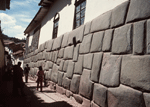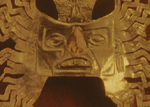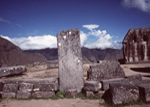Homework #4 Humanities on the Aztecs, Incas, and the first Spaniards |
1. |
Find and listen to a recording on YouTube of the Quechuan/Peruvian piece of music entitled "Hanaq Pachaq" (https://www.youtube.com/watch?v=60Z_LaGga3w); read the music notes on Peruvian music (Latin American Music Notes). Then search Wikipedia for Hanacpachapcussicunin (en.wikipedia.org/wiki/Hanacpachap_cussicuinin). Then write an answer in which you give your impressions of what is Peruvian and/or Incan (or Quechuan) and/or colonial Spanish about this piece of music. |
|||
2. |
Study the music notes on Bolivian, Ecuadorian, and Peruvian music (Latin American Music Notes; p. 5, p. 13, p. 25, respectively). Then give your impression of what endures from Incan/Quechuan (or other indigenous peoples) music in the music of those three countries. |
|||
3. |
Answer the Humanities Question in the image about Coyolxauhqui in the sequence (#3) on the Templo Mayor Museum pages. |
|||
4. |
(A) Describe what is Incan about the image you see here. (B) Compare and contrast the Incan part of this image with the aspect or aspects in this image that does/do not represent or come directly from Incan / Quechuan culture. (Note: think in terms of syncretism. Find this image in the pages on Cuzco, Perú.)
|
|||
5. |
After studying the online textbook Notes on the Incas, give your reaction and/or appraisal of what Alfred Métraux says in the HUM 2461 notes about the "swift conquest" of the Incas by the Spanish conquistador |
|||
6. |
(A) What does Tawantinsuyu (or Tahuantin-suy or Tahuantinsuyu) mean? (B) What does it have to do with the Inca empire? |
|||
7. |
(A) What is Sacsayhuaman? (B) From the 8 commented images of Sacsayhuaman in the HUM2461 online textbook, focus on one of the images illustrating Sacsayhuaman, describe that image in detail, and tell what the image suggests about pre-Incan culture. |
|||
8. |
(A) Compare and contrast the meaning/content of following three images from the Machu Picchu series:
|
|||
9. |
|
|||
10. |
(A) Describe the size, nature, and composition of Hernán Cortés's army that invaded the Aztec empire. And (B), write a very brief paragraph in which you identify the most major moments in Cortés's military campaign in Mexico from 1519 to 1521. (This question is based on the humanities fields of both history and military arts.) |
|||
11. |
(A) Who was Malinalli? (B) What did she have to do with the Spanish conquest of Mexico? (C) What is your personal opinion of her? |
|||
12. |
Identify 4 major aspects of Hernán Cortés the person that, in your opinion, make him mostly a man of the Renaissance. (For this answer, study the textbook's Key Terms page and the PowerPoint slide where you will find a description and a list of Renaissance characteristics.) |
|||
13. |
(A) Read the humanities document by Bernal Díaz del Castillo (Go to -> Support Pages -> Primary Documents -> #5). (B) Pick the passage that stands out most to you and copy it in your answer. (C) Analyze details in the passage you choose and tell why you find the details you pick to be so significant in terms of Latin American humanities. |
|||
14. |
Pick one of the following three places that are significant in the earliest years of the Spanish conquest of Mexico: (1) Coyoacán (note that Bernal Díaz mentions it in the passage mentioned above); (B) San Agustín Acolmán (note: there are elements of syncretism in this place); and (3) Tepeyac (note: there are also elements of syncretism in this place). (B) Pick one significant feature of one of those places, analyze that feature, and tell why it impresses you most. |
|||
15. |
Identify the author of the following book and tell why it is one of the most significant literary/historical documents concerning the early presence of Spanish conquistadors and colonists in the Americas: Brevísima relación de la destrucción de las Indias [Short Account of the Destruction of the Indies]. |






